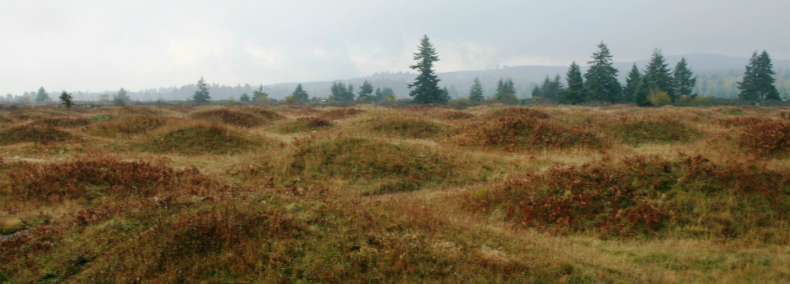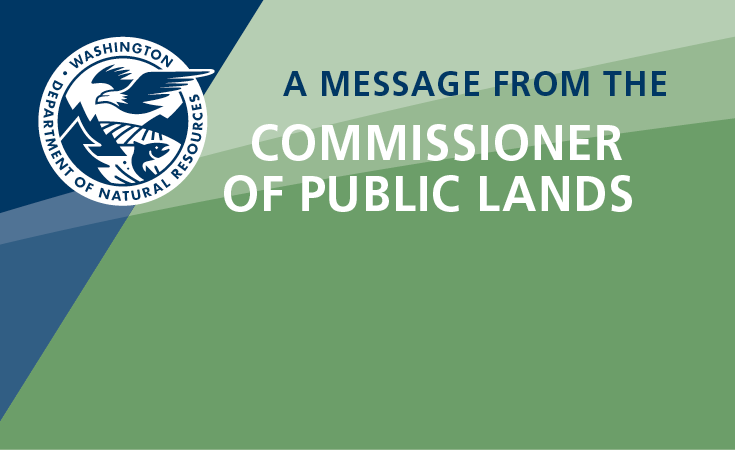Mima Mounds Natural Area Preserve

Attention: Alerts and Closures
Summer hours are 8 a.m. - 5 p.m.
REMINDER: Shooting and hunting are prohibited within Mima Mounds Natural Area Preserve. The firearm sounds you may hear on this site are occurring on the adjacent target range. (Violators are subject to civil or criminal prosecution under WAC 332.52 and other applicable law.)
REMINDER: Please remember there are no dogs allowed (service dogs are an exception) at Mima Mounds Preserve.
Mima Mounds Natural Area Preserve (NAP) was established in 1976 to protect rare examples of “mima mound” landforms and Puget prairie grasslands. The site includes a small Garry oak woodland and savannah (widely spaced oak trees with grass understory) and also supports a variety of prairie dependent butterflies and birds, and Douglas-fir forest. The NAP currently comprises 756 acres of grassland covered mima mounds, forest and oak woodland. In 1966, the National Park Service designated Mima Mounds Preserve as a National Natural Landmark, for its representation of our nation’s natural landscape; one of only 17 such landmarks in Washington state.
Features protected: Roemer’s fescue – white topped aster grassland community; Mima Mounds topography; Garry oak woodland and savannah
Ecoregion: Puget Trough (Thurston County)
Ecoregion: Puget Trough (Thurston County)
Environmental Education and Public Access
Educational Guide: Don't miss 'A Guide to Mima Mounds' booklet that explains the features of Mima Mounds.
**Washington 100, Geotourism Website**
Do you know the geologic stories of Washington’s most spectacular outdoor destinations? Check out Washington 100, a geotourism website that takes you on a journey to 100 great places to see geology in our state https://wa100.dnr.wa.gov.
Mima Mounds NAP has an interpretive trail system including a paved, ADA accessible ½ mile loop, and two longer gravel paths to the north and south of the paved loop. The interpretive center includes full color signs with information on geology, mima mound hypotheses, prairie ecology, fire and Native American use. Site stewards are available by request to lead group tours. Staff may be available for educational field trips as time permits.
Visit our Flickr page for photos.
Science, Research and Monitoring
Public and private universities, other research institutions and individual researchers may contact DNR to propose a research project at the site. If you are interested in pursuing research at Mima Mounds, please contact David Wilderman, Natural Areas Ecologist, at david.wilderman@dnr.wa.gov
- Mima Mounds Vascular Plant Inventory (439KB PDF)
Mima Mounds NAP has served as an active research site for more than 50 years, including studies of mound formation, prairie vegetation, rare species, and restoration methods.
Examples of research and monitoring projects
- Stanley, A. G., T. N. Kaye, P. W. Dunwiddie. 2010. Regional strategies for restoring invaded prairies, final technical report. Institute for Applied Ecology, Corvallis, Oregon and The Nature Conservancy, Seattle, Washington.
- Dorner, J. 1999. The South Puget Sound Prairie Plant Community: A Multivariate Analysis of Plant Species Distribution and the Relationship of Environmental Variables. M.S. Thesis, University of Washington, Seattle, WA.
- Del Moral, Roger, and David C. Deardorff. 1976. Vegetation of the Mima Mounds, Washington State. Ecology 57:520–530.
- Ground beetles in three western Washington prairies and associated oak forests.
- University of Washington – Tacoma, Restoration Ecology class projects.
- Inventory and distribution assessment of lichens, including the first record of Cladonia ciliata in the United States.
- Nelson. 1997. Implications of Subfossil Coleoptera for the Evolution of the Mima Mounds of Southwestern Puget Lowland, Washington. Quaternary Research 47, 356–358.
- Experimental seeding and outplanting of golden paintbrush (Castilleja levisecta).
Prairie Appreciation Day is held annually on the second Saturday in May at Mima Mounds NAP and the nearby Glacial Heritage Preserve. Mima Mounds NAP serves as the ADA accessible site for the event. Glacial Heritage is not accessible. For more information, contact the Pacific Cascade Region Natural Areas Manager.
Volunteer and Stewardship Opportunities
Site Stewards
Volunteer site stewards are needed year round to monitor the site, remove invasive species, check perimeter fences, and interact with visitors. If you are interested in becoming a site steward, please contact the Pacific Cascade Region Natural Areas Manager for more information.
Restoration at Mima Mounds Natural Area Preserve
The Department of Natural Resources, along with a number of partner organizations, is actively restoring parts of the Mima Mounds NAP to enhance conditions for rare plants, butterflies, and birds that inhabit prairie and oak habitats.
Directions to the Site
From southbound or northbound Interstate 5, take Exit 95 and turn west on Highway 121 (Maytown Road SW) toward Littlerock. In Littlerock, continue west (forward past the school, past the intersection with Littlerock Road that curves south, and past the mini mart/gas station on the right) onto 128th Avenue. Travel about 0.8 mile where 128th Avenue ends at a 'T.' on top of the hill. Turn right onto Waddell Creek Road and travel about 1 mile. The entrance to Mima Mounds Natural Area Preserve will be on the left.
A Washington State Discover Pass is required for parking at this site. This funding helps DNR manage these important natural areas across the state.


